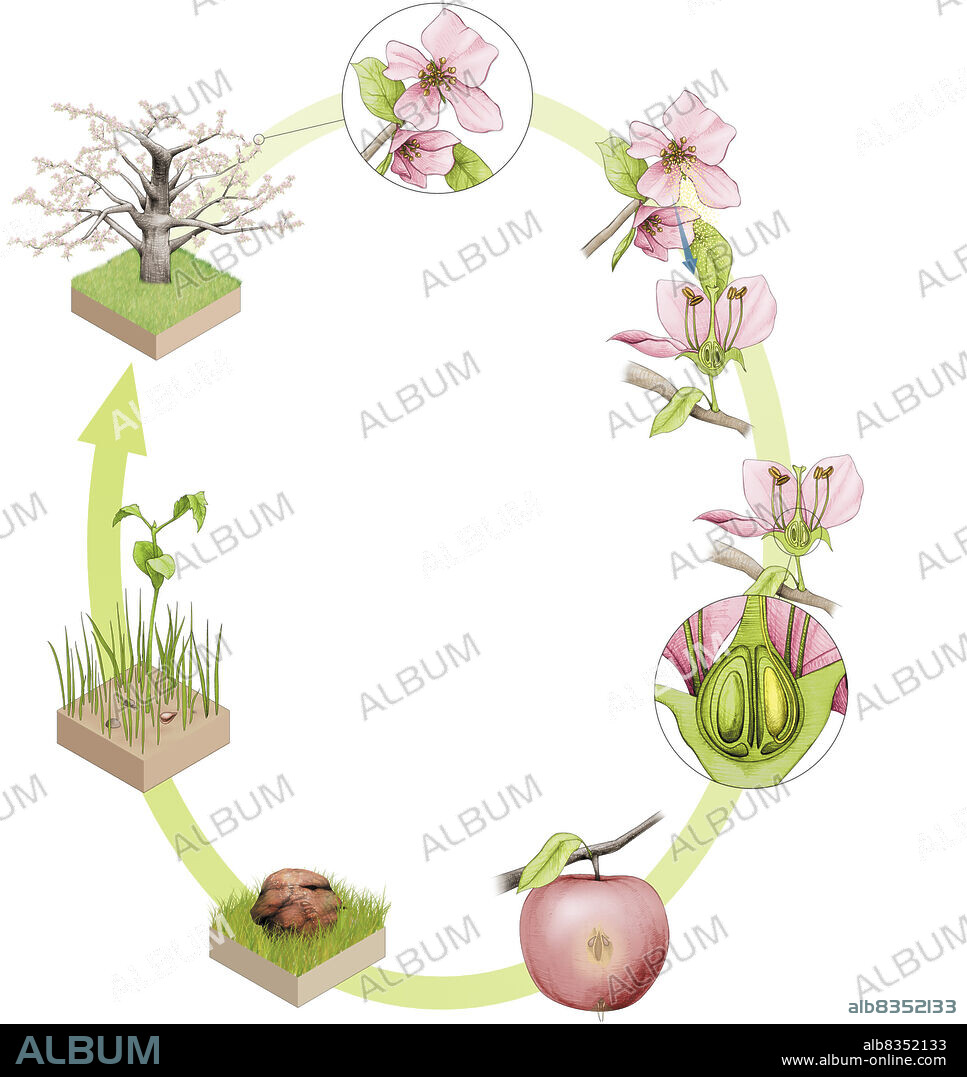alb8352133
The reproductive cycle of flowering plants can be broken down into six main steps. Flowers contain the plants reproductive organs, which produce pollen grains and ovules. During pollination, the pollen grains are transported, by the wind or a pollinating insect, from a stamen to the tip of a pistil, the organ above the ovaries. The pollen grain germinates in the pistil: it forms a pollen tube that extends down the pistil, enters the ovary, and fertilizes the ovule. The fertilized ovule forms a seed. When the ovary matures, it forms a fruit in which the seeds are enclosed. The fruit detaches itself from the mother plant, opens, and disseminates the seeds that it contains. Germination of a seed gives rise to a seedling, which develops into a plant.

|
Zu einem anderen Lightbox hinzufügen |
|
Zu einem anderen Lightbox hinzufügen |



Haben Sie bereits ein Konto? Anmelden
Sie haben kein Konto? Registrieren
Dieses Bild kaufen.
Nutzung auswählen:

Untertitel:
Siehe automatische Übersetzung
The reproductive cycle of flowering plants can be broken down into six main steps. Flowers contain the plants reproductive organs, which produce pollen grains and ovules. During pollination, the pollen grains are transported, by the wind or a pollinating insect, from a stamen to the tip of a pistil, the organ above the ovaries. The pollen grain germinates in the pistil: it forms a pollen tube that extends down the pistil, enters the ovary, and fertilizes the ovule. The fertilized ovule forms a seed. When the ovary matures, it forms a fruit in which the seeds are enclosed. The fruit detaches itself from the mother plant, opens, and disseminates the seeds that it contains. Germination of a seed gives rise to a seedling, which develops into a plant.
Bildnachweis:
Album / Universal Images Group
Freigaben (Releases):
Model: Nein - Eigentum: Nein
Rechtefragen?
Rechtefragen?
Bildgröße:
2266 x 2400 px | 15.6 MB
Druckgröße:
19.2 x 20.3 cm | 7.6 x 8.0 in (300 dpi)
Schlüsselwörter:
 Pinterest
Pinterest Twitter
Twitter Facebook
Facebook Link kopieren
Link kopieren Email
Email
